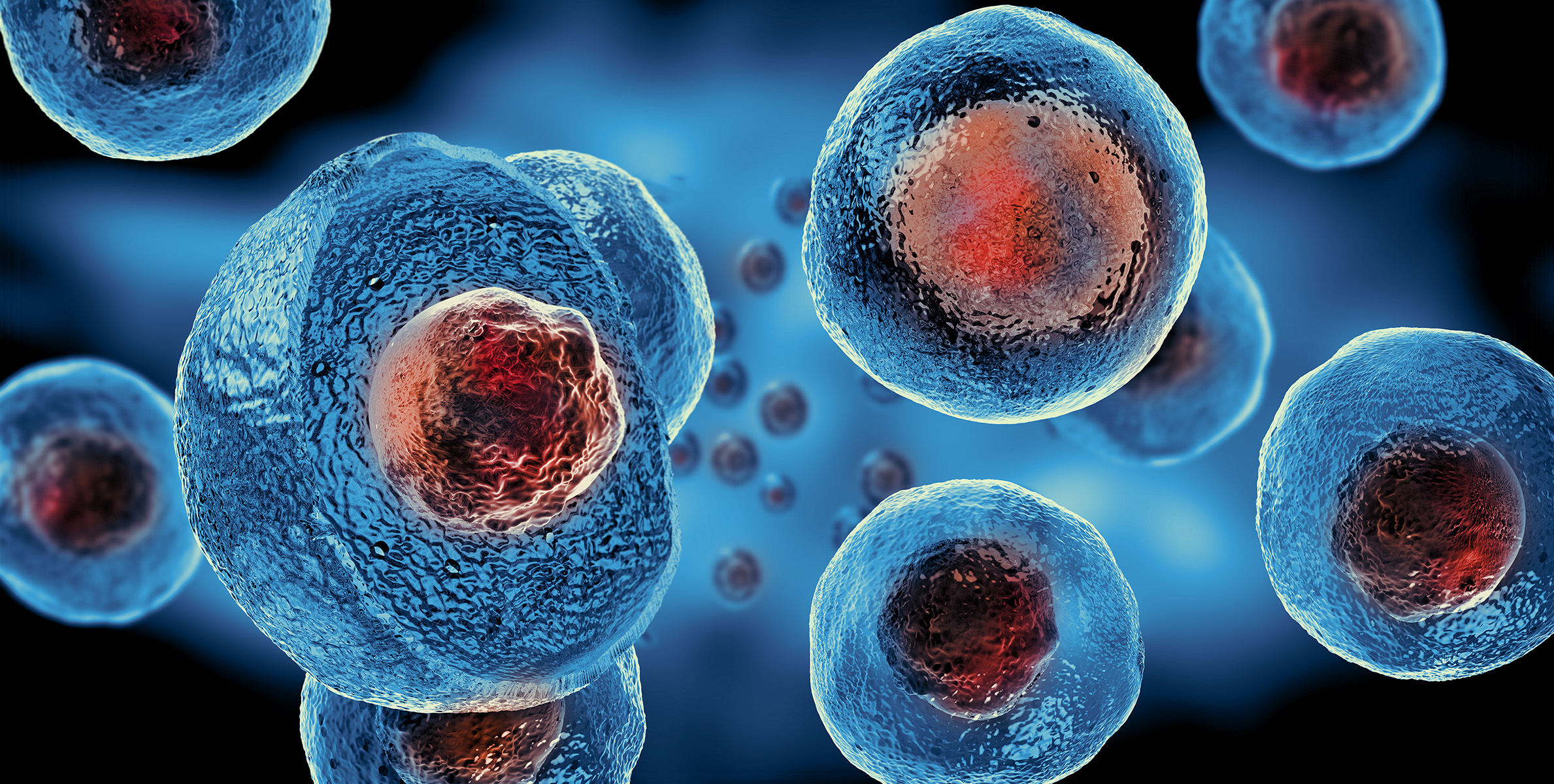
‘Stem Cells: The Mysterious Rebirth in Our Bodies’
What are stem cells and how do they work?
Currently the focus of biological research, stem cells are important building blocks containing our body’s self-healing ability. One of the main characteristics of these cells is their ability to develop into different types of tissues.
Imagine: in our body there is a group of cells called stem cells. These cells are so unique that they have the ability to transform into any desired cells. In other words, they are sort of incredible repairmen within the body.
Now, when we have a damaged area or we are sick, the stem cells are sent to that area and start working there like a repair crew. For example, if there is a problem in a certain area of the brain, the cells turn into brain cells, starting to heal the damaged area.
Since this treatment method is usually performed using your own cells, the healing process is faster. This makes treatment more effective as the body better recognizes and accepts its own cells.
These structures, which are a great hope in the world of science, are divided into two main categories: embryonic and adult stem cells. Embryonic cells are obtained from the early stages of the embryo and have the potential to develop into any type of cell in the body. This property can be used in medical applications such as organ transplantation, treatment of degenerative diseases and hopes of treating genetic disorders. On the other hand, adult cells come from specific areas of the body and can help repair tissue in those areas.
One of the outstanding characteristics of these cells is their natural ability to regenerate. Thanks to their ability to repair, damaged areas in the body can heal naturally. This means repairing damaged tissue, reducing the effects of degenerative diseases, and even completely restoring some organs. This natural healing process increases the potential for these cells to be used for medical purposes.
The role of these cells in medical research is constantly expanding and deepening. Using these cells in organ transplantation may reduce problems of immune incompatibility and provide the potential to create organs tailored to the specific recipient. In addition, the use of these cells to treat degenerative diseases offers hope for the successful treatment of many diseases such as Alzheimer’s disease, Parkinson’s disease, heart disease and diabetes.
The impact of this research on society goes beyond scientific development. Ethical issues and potential benefits shape public consciousness on this issue. Research on embryonic cells may raise ethical concerns due to the destruction of the embryo, but adult cells provide a more ethically acceptable alternative. At this point, public awareness and education play a key role in conducting this research ethically and effectively.
In conclusion, the potential of these cells is seen as a harbinger of a great revolution in the world of medicine. These small structures, by guiding us through the body’s natural healing process, offer hope for solving many health problems.
“What you need to know about stem cell treatment: risks and side effects”
Stem cell therapy is an important method in modern medicine, rapidly developing and providing a potential solution for many diseases. However, this promising treatment comes with a number of risks and potential side effects. In this article, we will conduct a comprehensive evaluation of stem cell treatment, focusing on possible risks and side effects during therapy.
Among the risks of stem cell therapy, the risk of infection is a significant factor, depending on how the therapy is administered and the cell sources used. In addition, possible complications in the areas where the therapy is injected should be considered. These situations may require close monitoring under the guidance of a physician during treatment.
In terms of side effects, mild and temporary symptoms are common. Common side effects may include fatigue, headache, mild fever and nausea, which usually improve on their own immediately after treatment is completed. However, given the differences in each person’s body structure, the strength and duration of side effects may vary from person to person.
Regarding long-term effects, the fact is that stem cell treatments are not well understood and more research is needed in this area. Some experts are cautious about possible long-term risks in certain cases. It is therefore important that people considering stem cell treatment receive detailed information about the potential risks and long-term effects.
In conclusion, stem cell therapy represents a promising alternative method for treating diseases. However, before starting treatment, it is important to undergo a thorough assessment and detailed information to minimize possible risks. This promotes more informed decisions on the part of both patients and healthcare professionals.
“Current developments and research in the field of stem cell treatment. “
Stem cell research began in the 1960s with the discovery of hematopoietic stem cells and has continued to evolve ever since, thanks to positive research results. Stem cell research is undergoing rapid development, providing updates to basic knowledge in cell biology as well as new information that may be useful to patients.
Stem cell research aims to explore potential treatments for various diseases such as heart disease, neurological disorders, diabetes, cancer and degenerative diseases. Also important areas of development are research into the role of stem cells in disease intervention when combined with genetic regulation technologies.
Stem cells represent an area that holds promise in the treatment of neurological diseases. In particular, research is underway on stem cells to treat neurological disorders such as cerebral palsy, autism and Alzheimer’s disease. Cellular therapies have the potential to repair damaged brain tissue.
The Turkish Academy of Sciences (TÜBA) has created a group for research and work on stem cells. This group includes 12 professors and was active between 2005 and 2021. It currently continues its activities under the name “Working Group on Medical Sciences and Technologies”.
Stem cells in the treatment of autism
It is difficult to overestimate the role of communication. Speech, gestures, glances, facial expressions, and touches matter. Such people find it difficult to understand what other people think and feel. They have difficulties in a variety of types of learning. The presence of such a patient in the family brings a lot of anxiety to his loved ones and those around him. According to WHO, there is 1 case of any form of autism per 160 children worldwide. The problem is aggravated by the fact that it is almost impossible to identify the exact cause of this deviation. The most likely are genetic and chromosomal abnormalities, adverse effects of heavy metals and toxins, drugs valproic acid and thalidamide, low birth weight, aged parents. Multifactorial causes lead to changes in the structure and function of the brain. The first noticeable developmental deviations appear at 2-3 years of age.
Another sad news is that even after learning about the presence of autism, parents are deprived of the opportunity to carry out full treatment – there is no cure for autism! Play, behavioral and occupational therapy, physical therapy, and classes with a speech therapist help alleviate the situation.
The emerging regenerative medicine using mesenchymal stem cells gave the first results of 91% improvement in such children. Research into the use of stem cell treatment continues; it has been found that they help create new blood vessels in brain tissue, transmit nerve impulses between neurons, and reprogram the child’s brain. The best confirmation of the promise of stem cell treatment are the words spoken for the first time: “I love you, mommy!”
Stem cells for the treatment of type 1 diabetes
Type 1 diabetes has long been considered an incurable autoimmune disease that occurs due to a malfunction of the immune system, as a result of which the body destroys its own pancreatic islet cells that produce insulin. The process of glucose absorption was disrupted; it circulated in the blood in increased concentrations and was excreted in the urine. Treatment was reduced to replacement therapy with externally administered insulin against a background of a strict diet and prevention of numerous complications.
New prospects for these patients have opened up with the use of mesenchymal stromal cells (MSCs). They are obtained from bone marrow, adipose and placental tissue. These cells, being a type of stem cells, serve as the ancestors of many body tissues due to their ability to undergo multiple divisions and high differentiation. Their main difference from embryonic stem cells is that they are not obtained from the tissues of an embryo or fertilized egg, and they do not have the ability to endlessly divide, causing cancer.
During their introduction into medical practice, they proved that they can not only stop the autoimmune process of destruction of beta cells of the pancreatic islets, but also create new islets! In essence, a unique process of producing one’s own insulin is launched, and in addition, the inflammatory autoimmune reaction of destruction of pancreatic tissue is suppressed. The introduction of MSCs is especially effective in the initial stages of the disease.
Stem cells in the treatment of erectile dysfunction
The problem of erectile dysfunction (impotence) occurs in half of men aged 40 to 70 years. Its peculiarity is that it not only covers a large number of men from the specified age group, but also people under 40 years of age. It manifests itself in the fact that a man has difficulties with the appearance and maintenance of an erection at a level sufficient for full sexual intercourse. There may also be accelerated ejaculation or an inability to achieve it. Possible decrease in libido.
Erection is a complex physiological process that depends on many factors, such as hormone levels, vascular condition, the presence of concomitant pathologies, and the use of certain medications.
The causes of dysfunction of this function can be divided into 2 groups: psychological and physical. Hence the variety of treatment methods, including surgery. The more accurately the cause is determined, the better the treatment results. The disadvantage of therapy is that it is auxiliary in nature, without eliminating the root cause.
Treatment of ED with stem cells is fundamentally different. Cells of nerves, blood vessels and muscles are regenerated.
Mesenchymal stem cells, which, unlike embryonic ones, do not have a carcinogenic effect, are obtained from adipose tissue, bone marrow or blood. The introduction of MSCs into the cavernous bodies of the penis triggers the regeneration mechanism of affected cells and relieves local inflammation.
A single injection of MSCs into the penis allows you to have a normal sex life without the use of other medications for a year. A course of 3-4 injections will relieve the problem of impotence for many years!
Stem cells in the treatment of Alzheimer’s disease
Alzheimer’s disease is a neurodegenerative brain disease that is more common in people over 60 years of age. The onset of the disease is manifested by a violation of short-term memory, the patient forgets the names of objects and the names of acquaintances. Further, critical thinking suffers, cognitive abilities and professional skills decrease. The progression of the disease disrupts orientation in space and time, leading to dementia and a decrease in the volume of brain tissue. A person needs constant care.
The cause of the disease is not known, but it has been established that amyloid plaques develop and connections between neurons and parts of the brain are disrupted due to inflammatory and immune processes that destroy the myelin sheath.
Mesenchymal stem cells are a special type of cells that can transform into any other cells and replace damaged tissue.
Unlike embryonic cells, adult cells obtained from adipose tissue, bone marrow and blood do not provoke the development of cancer.
In Alzheimer’s disease, MSCs have an anti-inflammatory effect and differentiate into nerve cells, replacing neurons in the affected areas of the brain. Good results were obtained in combination with hardware physiotherapeutic methods.
Research on the use of MSCs continues actively and successfully throughout the world. Scientists hope that this path will help humanity get rid of this terrible disease.



